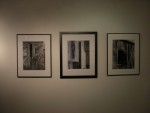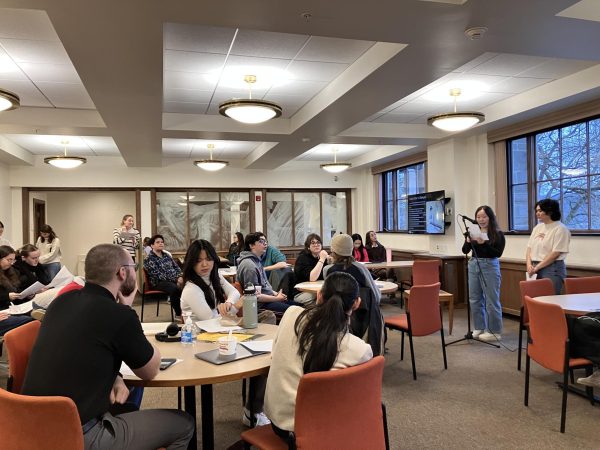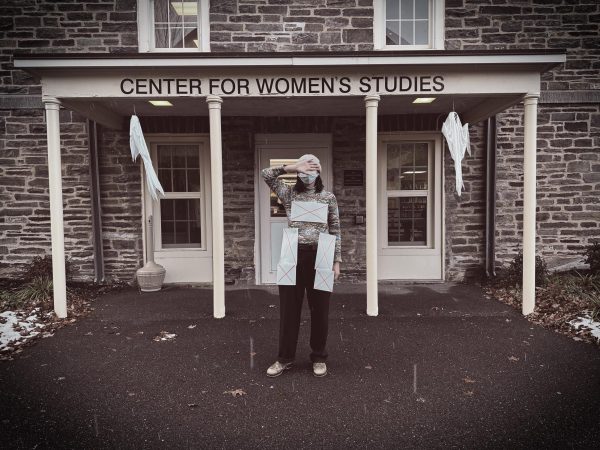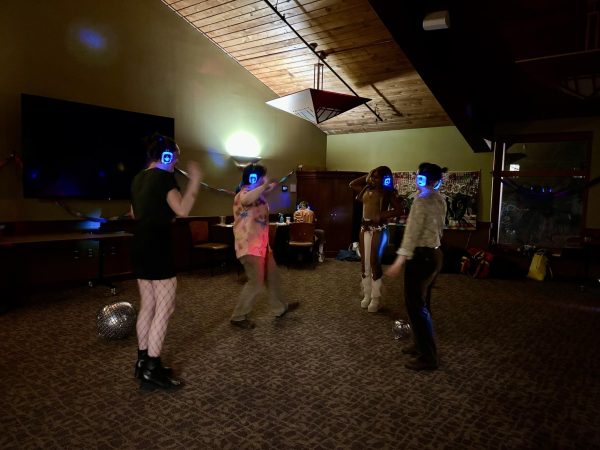Where the Art Is: MAD Art

With a name like MAD Art, one must wonder what type of members this cooperative gallery attracts. The MAD in the gallery’s title may in fact refer to its geography – which includes the greater Madison county region – but this community arts organization boasts no shortage of talented and exuberant local artists. What has attracted over 75 individuals to this Hamilton-based organization is not only its continual rotation of art classes and workshops, but also frequent exhibitions throughout the year.
The third annual “Black and White” show opened at MAD Art on February 5. Featuring work by over thirty MAD Art members, the show demonstrates an amazing level of diversity despite the requirement that the artists use only black and white media. This year, however, there was an added twist of allowing a greater breath of work, reflected in the extended title “Black, White, and Shades of Gray.” Photography was by far the most popular category, but even within it artists were able to stretch their creative muscles. Kara James, for instance, abstracts ordinary images – such as a row of plastic deck chairs or a castle tower – in order to emphasize a geometric simplicity, reflected in her attention to form and pattern.
James’s play on refracted perspective is carried over in the work of Alice Virden-Speer. Her piece Little Toes, pictures an intimate portrait of the bottom of various sized feet, playfully photographed from the ground. Freedom, which hangs beside it, demonstrates an equally close reading of the human form – capturing the tangled waves of a child’s hair, in its formal design this photograph resonates with one of the two three-dimensional works in the exhibition. Duane Martinez’s Tree is a hand-wrote piece of twisted black iron, which weaves together into the shape of a wiry and whimsical tree. In another work of photography, Sherry Wright captures the subtle and quiet stillness of frost-lined trees in her work Trees Laced in Ice. By calling the trees “laced” with ice, Wright captures the delicate intricacies which the photograph’s weave-like pattern of branches delivers. Continuing the same naturalistic themes, there were several floral works grouped together, one each by Toala Perry, Mark Williams and Magie Bikowsky. Bikowsky’s Bunch of Lilies, one of the artist’s first photographic works, is a pleasantly composed still-life with the whiteness of the flowers floating upward in a softly vertical manner on a blackened background. Williams takes these chromatic decisions to the extreme in his highly focused and highly contrasted work Orchid, in which a single white flower glows like an orb of light on a shadowy background. Williams takes a similar detailed investigation in his other works, Stonehenge, Barn Door, and Newport Bridge.
Several artists chose to study architectural and photographic subjects in their work, but other artists continued the trend of nature in other media. The watercolors of Rex Arseculeratne, for instance, observe a carefully detailed representation of landscape. Though small in size, these works are softly rendered in overlapping shades of translucent grays, keeping true to the exhibition’s title while at the same time rendering a lively, yet ephemeral, engagement with the environment. Leigh Yardley speaks to the power of landscape in quite a different way in her stunning acrylic pieces, which are composed of a white background and heavily textured black and gray surface patterns. Like Yardley’s other works, with such titles at Temperatures Dropping and Moving Water, her paintings display a close attention to the physicality of the environment that she renders with a palpable emotionality.
Two artists who approach the “Black and White” requirements throw drawing are Cathy Marsh and Amy Eustance. Marsh’s small pen-and-ink drawings are highly concentrated, energetic portraits of female faces in a sea of floral and swirling decorative patterning. Her henna-like creations serve to highlight the intensely skillful mastery of line-quality and elegant composition. Eustance’s drawings are large, figural works rendered in sweepingly graceful strokes. The greatest strength of Eustance’s charcoal drawings, of which Suspension is one of the most aesthetically impressive, are their ability to render the body with kinetic energy that creates a layering of perception. Eustance comments that this show is one of the favorites for the MAD Art members, and perhaps, considering the diversity and eccentricity of the artists in this exhibition, it is not surprising that they would be attracted to this unique yearly event.




